Monday, 24 November 2014
Saturday, 22 November 2014
Experimenting with glitter and photoshop
We used a variety of coloured glitters to create the unedited images and then I proceeded to experiment with them on Photoshop.
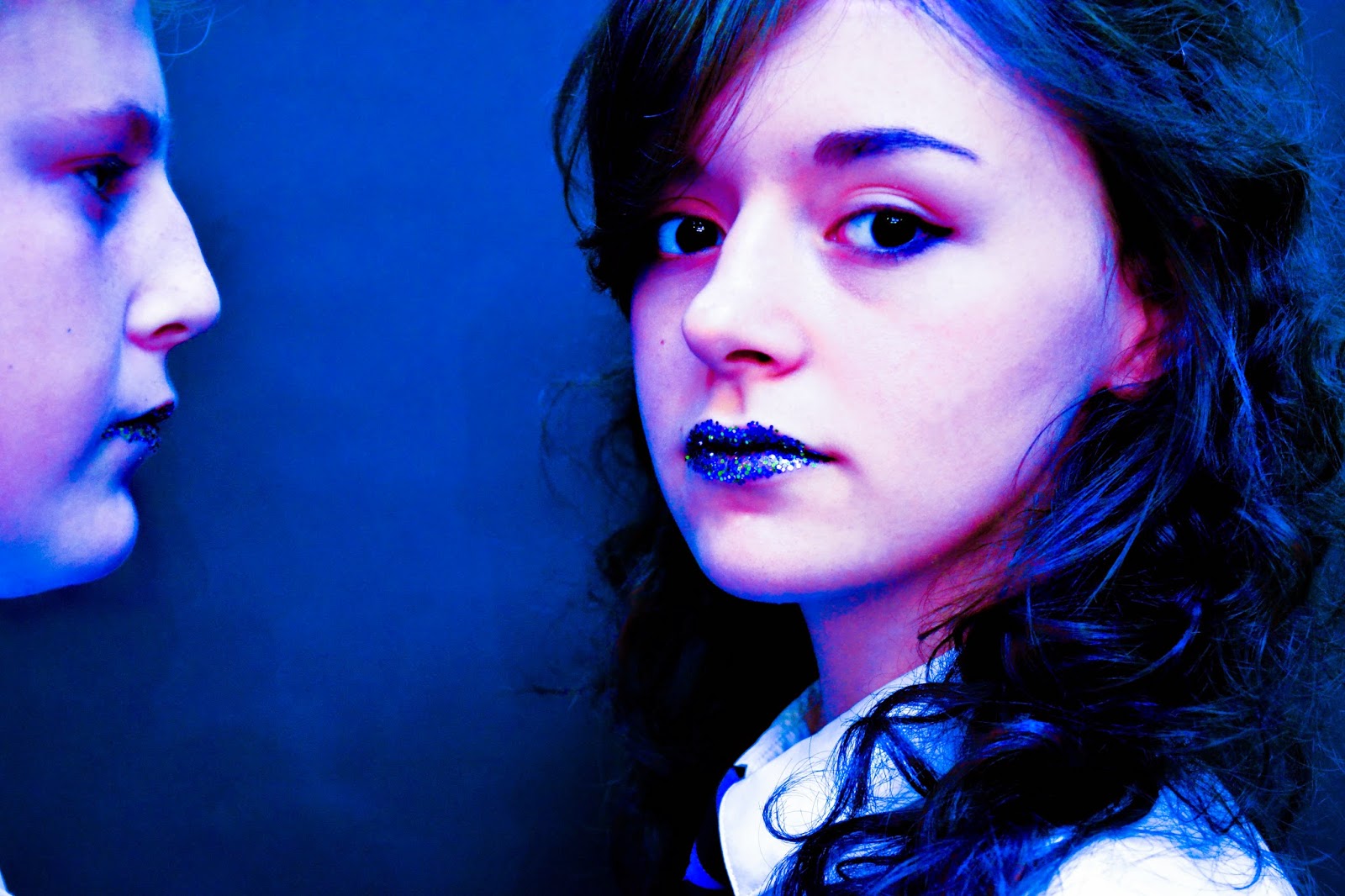
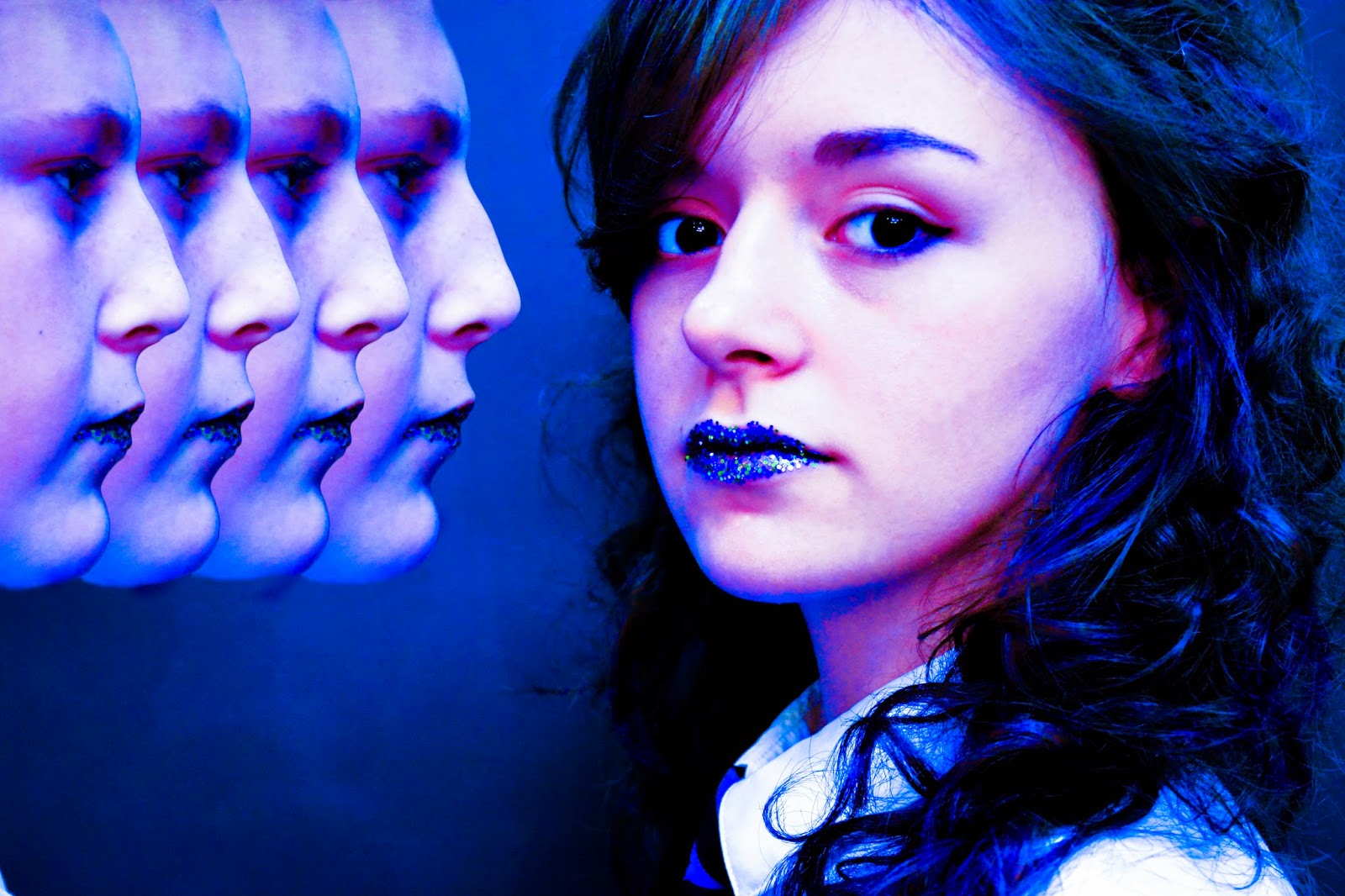

I edited this photo to resemble something of tilt shift, blurring everything except a strip across the eyes. This makes the eyes stand out and take centre stage as the focus point of the image. I used the liquify tool to make it appear as though her own features were melting off of her face.
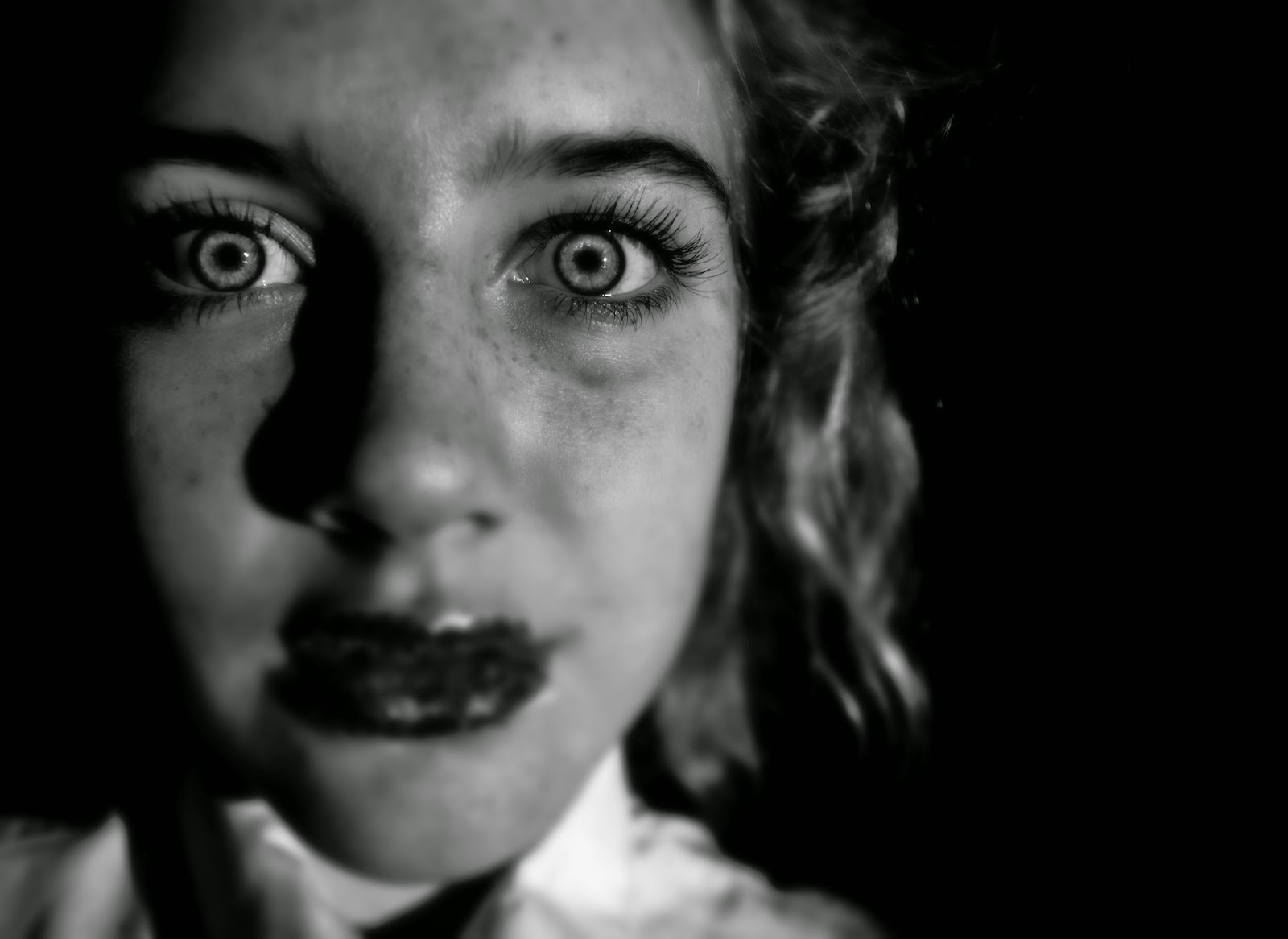
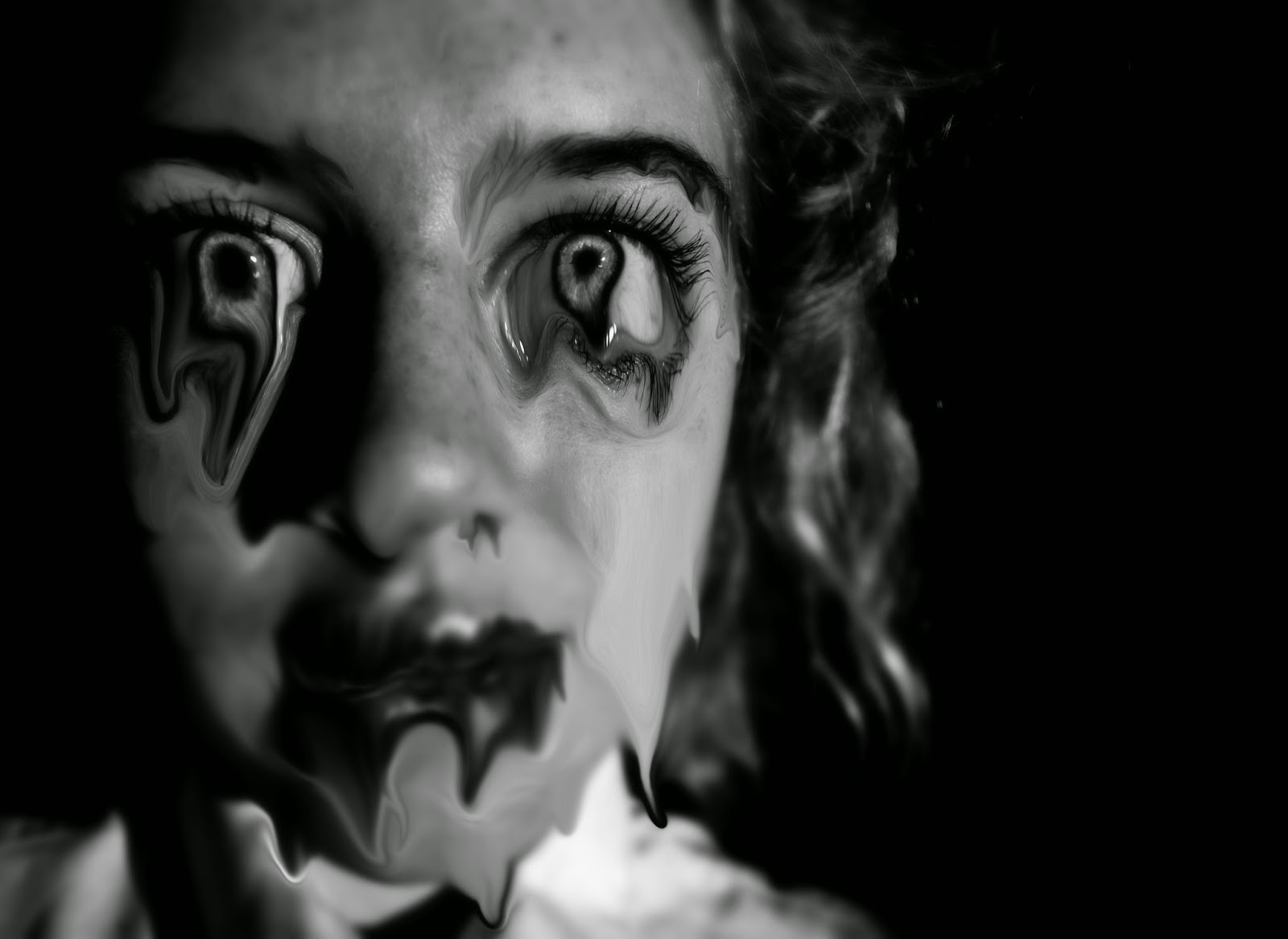
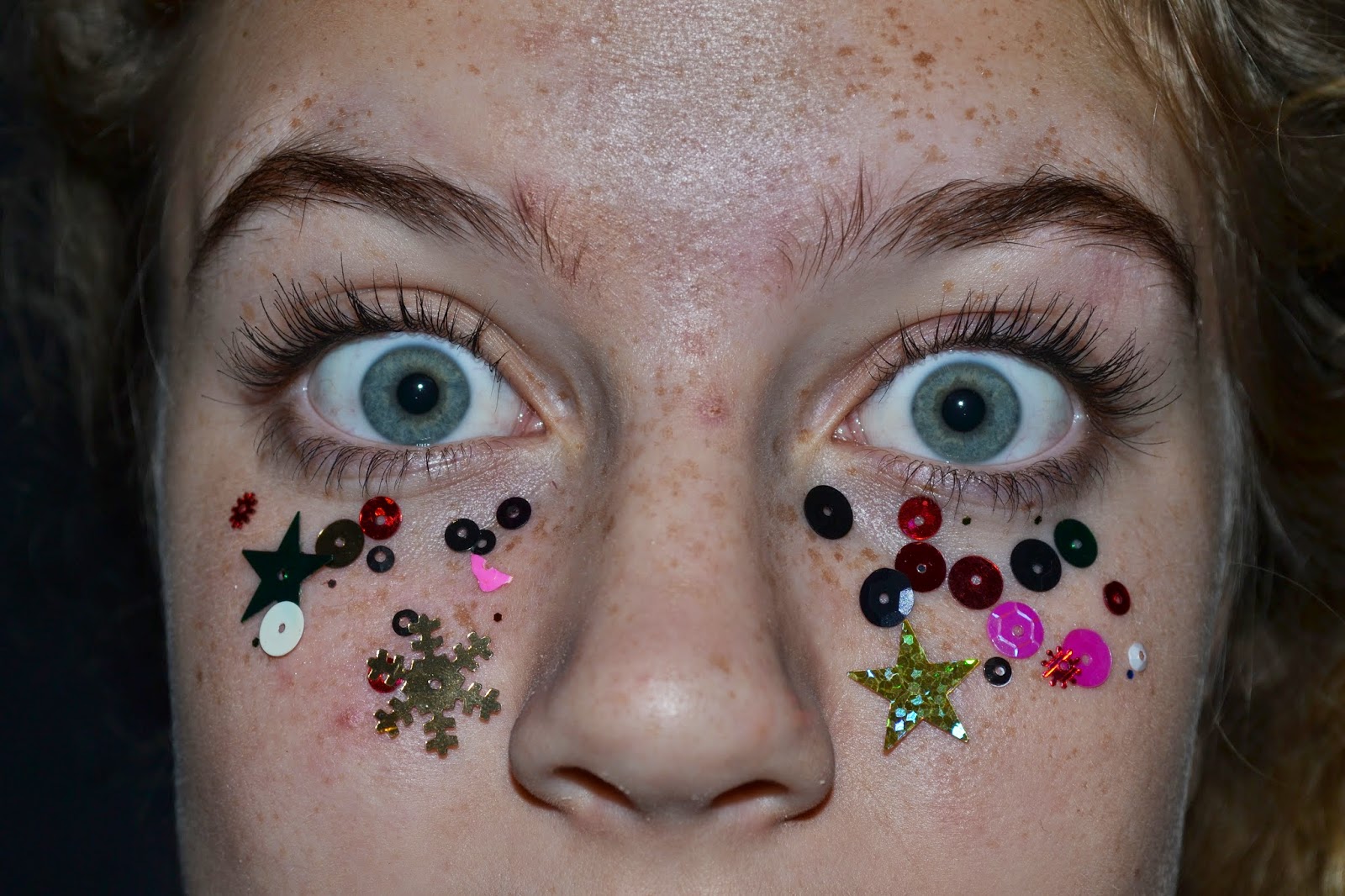

I straightened this image and went around with the burn and dodge tool to emphasise certain areas. The eyes are almost un-naturally sparkly but when the turquoise of them is paired with the sequins, it almost has a marine-seaside feel to it.




This photo was interesting because of the focus and shadows. I liked it but it just seemed a little plain. The first thing I did was convert it to black and white and play around with the vibrance and contrast levels. Then I moved the subjects face so the image fit the rule of thirds. I then played around with the liquify tool which created a really interesting melted effect.
 I like this photo because it showed the glitter very clearly. The image itself is almost like a sinister Christmas type thing due to all of the glitter around the subject's mouth. I increased the clarity, contrast, shadows and then burnt areas including the background to give it a more spotlighted effect
I like this photo because it showed the glitter very clearly. The image itself is almost like a sinister Christmas type thing due to all of the glitter around the subject's mouth. I increased the clarity, contrast, shadows and then burnt areas including the background to give it a more spotlighted effect

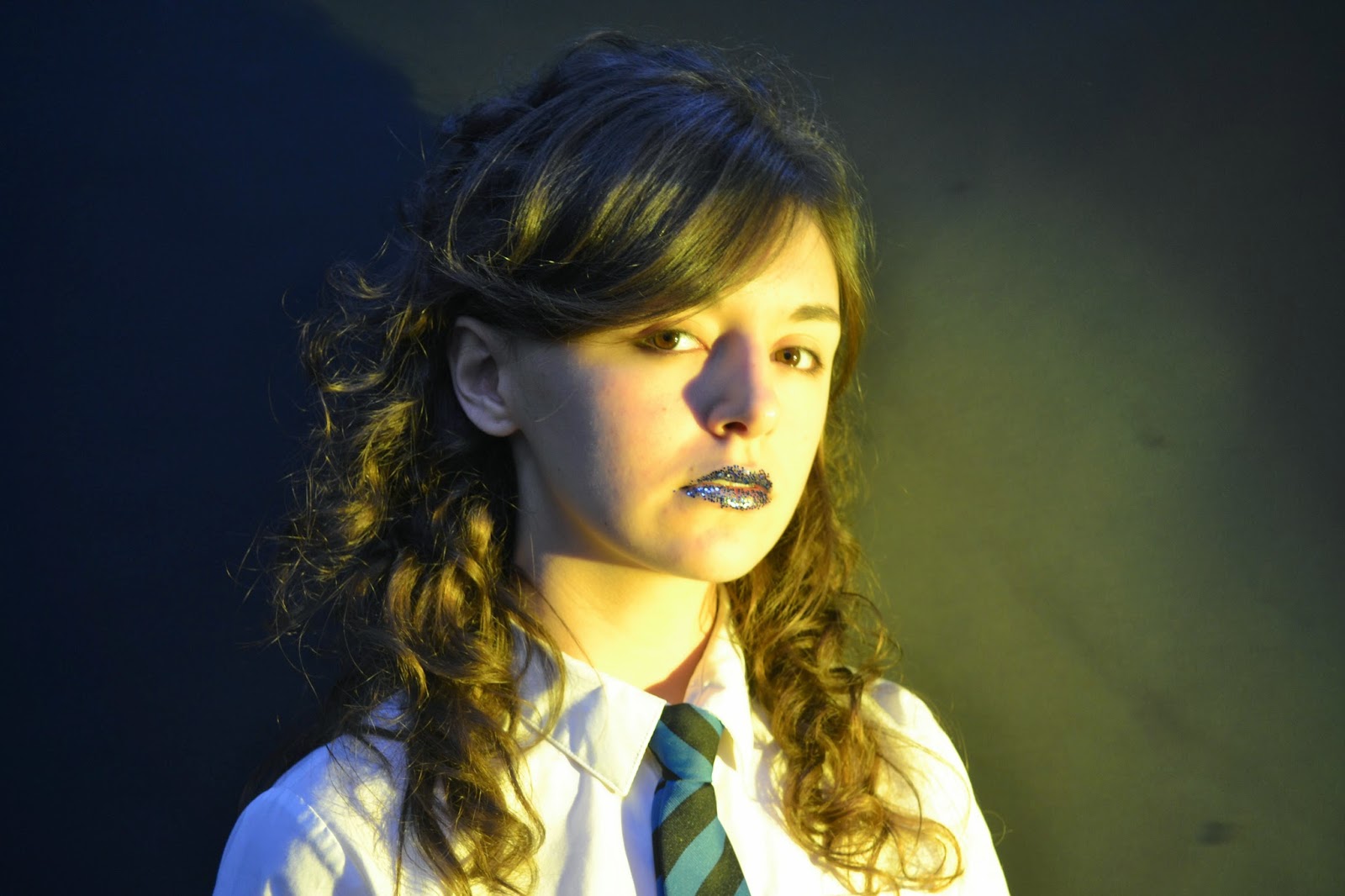.JPG)

I was pleased with how the photos we took with colour came out. The colour was created by placing a see-through tinted acetate sheet on a projector and then switched it on, creating in some cases a subtle (but less subtle in other cases) glow or tint to the background or subject itself.
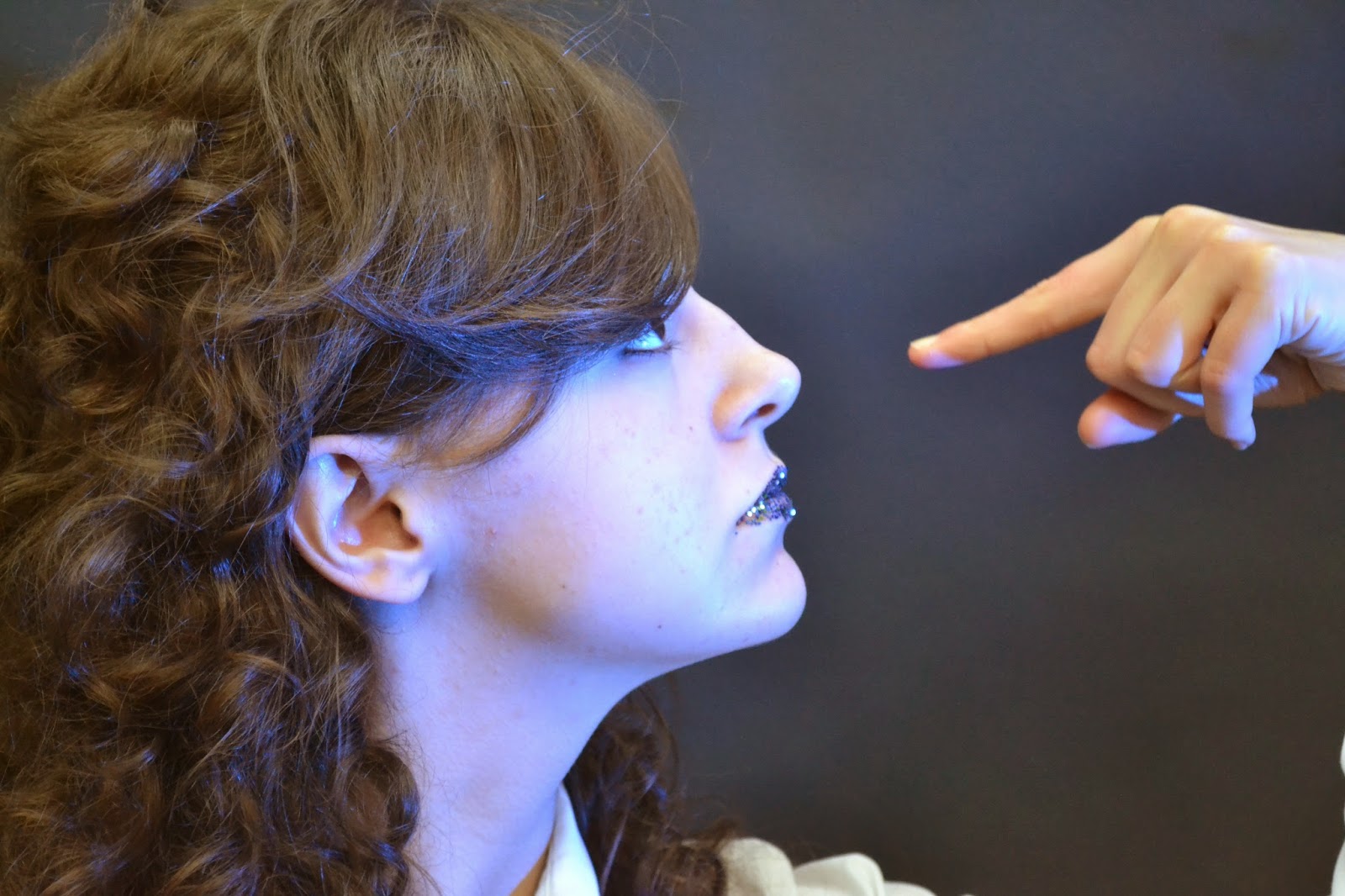





I edited this photo to resemble something of tilt shift, blurring everything except a strip across the eyes. This makes the eyes stand out and take centre stage as the focus point of the image. I used the liquify tool to make it appear as though her own features were melting off of her face.




I straightened this image and went around with the burn and dodge tool to emphasise certain areas. The eyes are almost un-naturally sparkly but when the turquoise of them is paired with the sequins, it almost has a marine-seaside feel to it.




 I like this photo because it showed the glitter very clearly. The image itself is almost like a sinister Christmas type thing due to all of the glitter around the subject's mouth. I increased the clarity, contrast, shadows and then burnt areas including the background to give it a more spotlighted effect
I like this photo because it showed the glitter very clearly. The image itself is almost like a sinister Christmas type thing due to all of the glitter around the subject's mouth. I increased the clarity, contrast, shadows and then burnt areas including the background to give it a more spotlighted effect
.JPG)

I was pleased with how the photos we took with colour came out. The colour was created by placing a see-through tinted acetate sheet on a projector and then switched it on, creating in some cases a subtle (but less subtle in other cases) glow or tint to the background or subject itself.



Maurizio Anzeri
Maurizio Anzeri is an Italian artist, born in 1969, Italy, and living in London.
Anzeri creates beautiful works of art by either taking photographs or using older, found ones and then embroiders onto them with thread in elaborate patterns.
I think the idea of embroidering straight onto the photographs is probably pretty difficult to do, especially if you have no sewing experience (a.k.a- me), but the colours and directions Anzeri uses in his work either compliment or contrast with each other so well. He almost always revolves the thread around one eye which keeps the focus point evident and intentional rather than the viewer not knowing where they're supposed to be looking on the photo, the one eye uncovered is almost like a grounding point, keeping people from getting lost.
Yellow and purple are complimentary colours on the colour wheel, these two colours embroidered in the way they have been really give an almost floral effect, It's no my favourite of Anzeri's work but it does look very interesting.
I think the idea of embroidering straight onto the photographs is probably pretty difficult to do, especially if you have no sewing experience (a.k.a- me), but the colours and directions Anzeri uses in his work either compliment or contrast with each other so well. He almost always revolves the thread around one eye which keeps the focus point evident and intentional rather than the viewer not knowing where they're supposed to be looking on the photo, the one eye uncovered is almost like a grounding point, keeping people from getting lost.
Yellow and purple are complimentary colours on the colour wheel, these two colours embroidered in the way they have been really give an almost floral effect, It's no my favourite of Anzeri's work but it does look very interesting.
The image on the right is definitely my absolute favourite of Maurizio Anzeri's embroidery portfolio. I think it's incredible because the colour scheme consists of colours resembling the insides of a human which is really interesting. This idea is a nice contrast to the dull, faded colour in the portrait which has no human tones about it. The thread is almost mimicking the brain, spilling out of the subjects head in a beautifully abstract way.
The Son Of Man
The Son Of Man is one an iconic self portrait painted by Rene Magritte in 1964. It depicts a man in a black overcoat with a bowler hat standing in front of a wall before the sea.
I don't really want to copy the image in my final piece, though I think I'll take elements and ideas from it. For example, the way the apple is covering the face but not completely is really interesting and I think I'll take this idea using another material or object. I also like the businessman attire, especially the bowler hat because it makes it feel very dystopian, like something from 1984. I'd like to bring a bowler hat into my piece to create a similar atmosphere.
Dirk Ercksen
Dirk Ercksen is a photographer who neither focuses on disguise nor portraiture, which are the two main elements of my final idea. However his techniques and ideas have inspired me enough to transfer some of his style into part of my final piece.
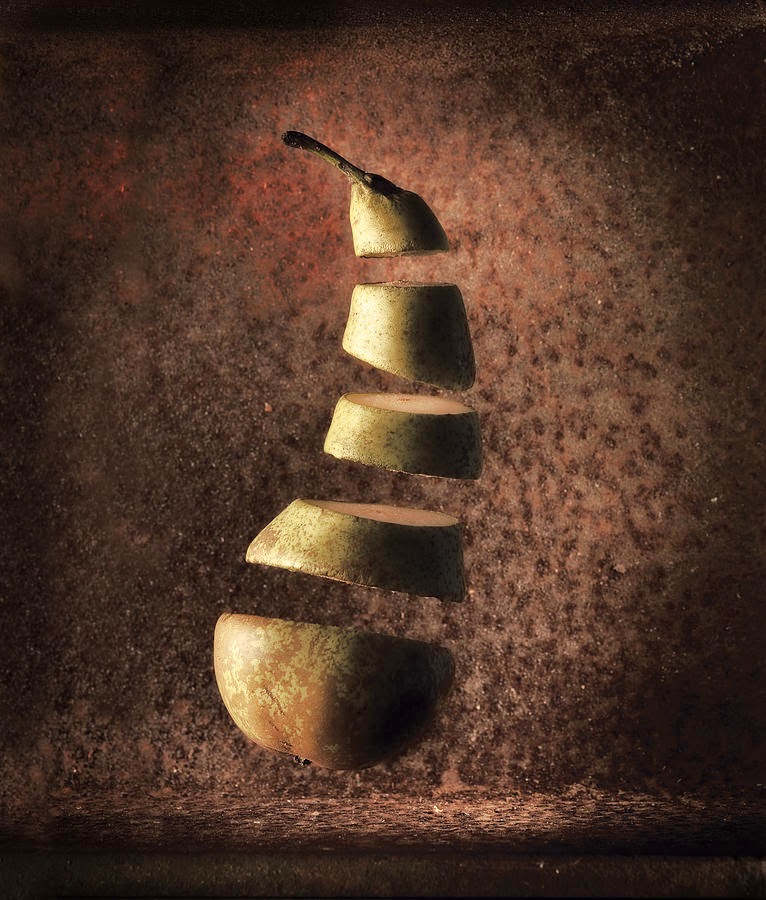 These are the two images I find most appeeling (pun intended). What he's produced is absolutely seamless, I would hazard a guess to say that he probably either used a wire to create these images or just used photoshop alone. When I create my final piece I'll be using a person and therefore be unable to cut them up and put a wire through them, so I'll focus on the Photoshop side of it. It's probable that he's taken photo's of each slice of fruit separately and then photoshopped them on the background. This sounds like it would be easy to do and is probably how I will do it in my final piece.
These are the two images I find most appeeling (pun intended). What he's produced is absolutely seamless, I would hazard a guess to say that he probably either used a wire to create these images or just used photoshop alone. When I create my final piece I'll be using a person and therefore be unable to cut them up and put a wire through them, so I'll focus on the Photoshop side of it. It's probable that he's taken photo's of each slice of fruit separately and then photoshopped them on the background. This sounds like it would be easy to do and is probably how I will do it in my final piece.
My transcription:

 These are the two images I find most appeeling (pun intended). What he's produced is absolutely seamless, I would hazard a guess to say that he probably either used a wire to create these images or just used photoshop alone. When I create my final piece I'll be using a person and therefore be unable to cut them up and put a wire through them, so I'll focus on the Photoshop side of it. It's probable that he's taken photo's of each slice of fruit separately and then photoshopped them on the background. This sounds like it would be easy to do and is probably how I will do it in my final piece.
These are the two images I find most appeeling (pun intended). What he's produced is absolutely seamless, I would hazard a guess to say that he probably either used a wire to create these images or just used photoshop alone. When I create my final piece I'll be using a person and therefore be unable to cut them up and put a wire through them, so I'll focus on the Photoshop side of it. It's probable that he's taken photo's of each slice of fruit separately and then photoshopped them on the background. This sounds like it would be easy to do and is probably how I will do it in my final piece.My transcription:

Friday, 21 November 2014
Maria Aparicio Puentes
Maria Aparicio Puentes' work is a really beautiful mix of photography and embroidery. A lot of what she does has embroidery on it but it never appears as though the two mediums are fighting against one another. The thread is sewn on in delicate straight lines in colours compliment or contrast with the photograph appropriately. The lines add drama and a new level of dynamics to the photo which would probably be hard to reach using only a camera.
Some of my favourite pieces of Maria's work:
Some of my favourite pieces of Maria's work:
The above image is really cool I think. The thread looks like it resembles wings and the large windows are almost church-like in appearance. The composition of the image makes it seem holy when put with the content, as well as this the colours green and yellow of the wings reflect spring colours, like the re-birth of Christ and Easter. This is just my interpretation but as with all are it's up to the perspective of the viewer.
The above photo would still be quite nice without the lines but with the thread the image becomes almost three dimensional. It's incredible how the colour of the thread actually compliments the photo as well as standing out without seeming too bright and distracting from the actual photo. It must have taken serious consideration on the shades of the colours in order to avoid the image looking too crowded.
Subscribe to:
Comments (Atom)







.JPG)

























